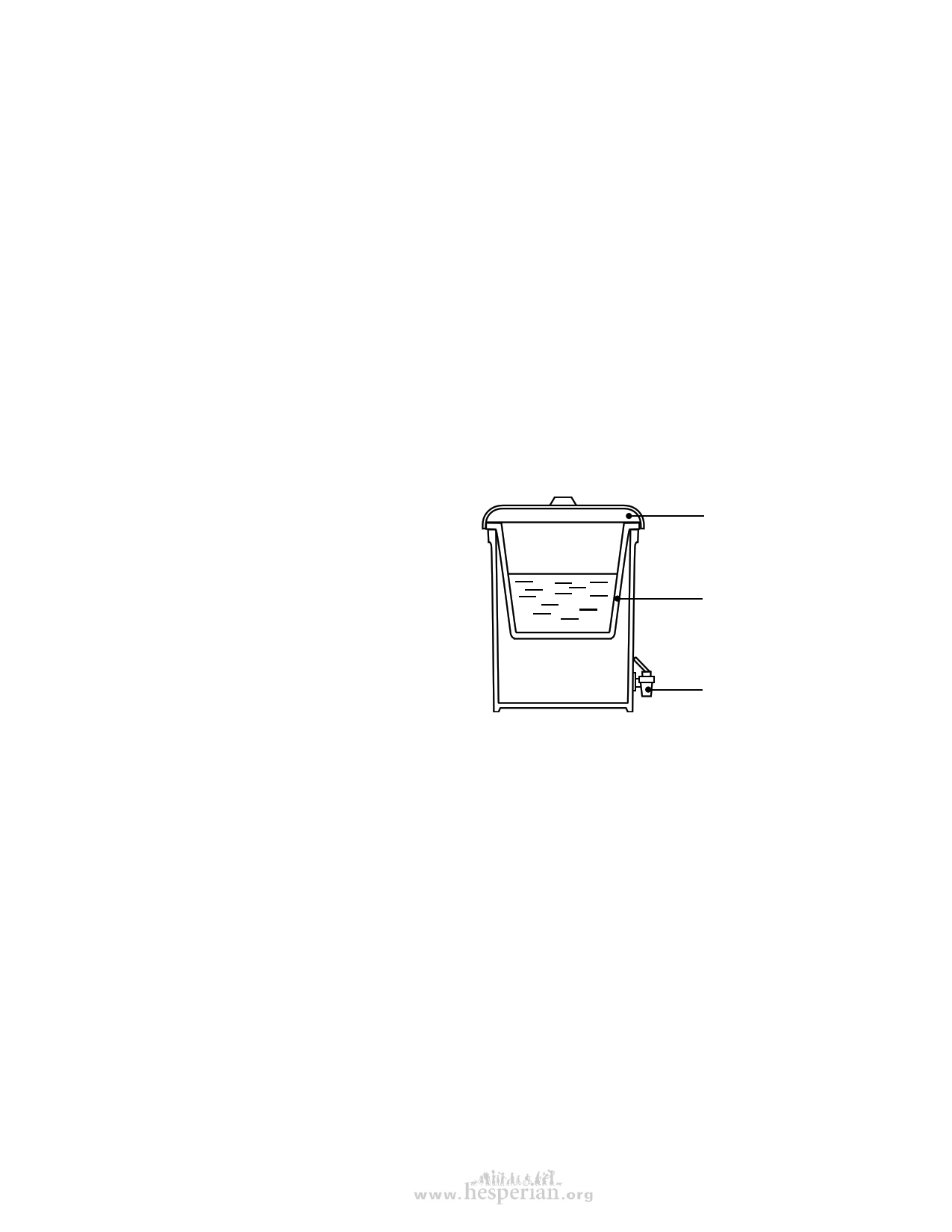
Water for Life 43
To use and maintain a slow sand filter
After a few days of use a layer of green scum (bacteria and algae) will grow on top
of the sand. This layer helps to treat the water. For this layer to work the sand must
always be covered with water. Fill the filter daily and remove water only in small
quantities. If the filter is drained completely it will lose its effectiveness, and should be
cleaned and refilled.
Every few weeks when water flow from the tap slows down, clean the filter. Let any
water out of the filter and remove the green layer and about 1 centimeter of sand from
the top. After many cleanings, when more than half of the sand has been removed,
replace all the sand and gravel with new cleaned sand and gravel and start over. This
may be necessary 1 or 2 times a year.
Improvements to a slow sand filter
Allowing solids to settle out of the water before filtering it will reduce maintenance
of the filter because water will be cleaner when it enters. Letting water flow like a
waterfall will add air into the water and make it taste better.
A filter has been invented that uses iron nails to filter out arsenic (the arsenic binds
to the iron). (To learn about this filter see page 47, Where to get more information.)
Ceramic filters
A small and effective
water filter can be made
from fired clay coated
with colloidal silver (a
substance that kills germs).
With basic training, a
village potter can easily
make these filters. (To
learn how to produce and
promote these filters, see
page 47, Where to get more
information.)
Plastic top
Ceramic filter
Plastic faucet
Ceramic filter used inside a plastic bucket.
Community slow sand filter
Larger filters can be made that connect to surface water sources or piped water
systems to supply safe water to a whole village or neighborhood. Where surface water
is the only available source, a community slow sand filter is a good way to treat large
amounts of water with little work. These filters require an engineer to build and install
properly, so we do not describe them here. (To learn more about community slow
sand filters, see page 47, Where to get more information, and the International Water
and Sanitation Centre.)